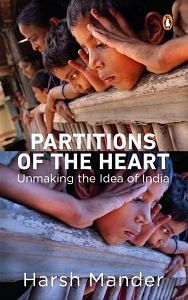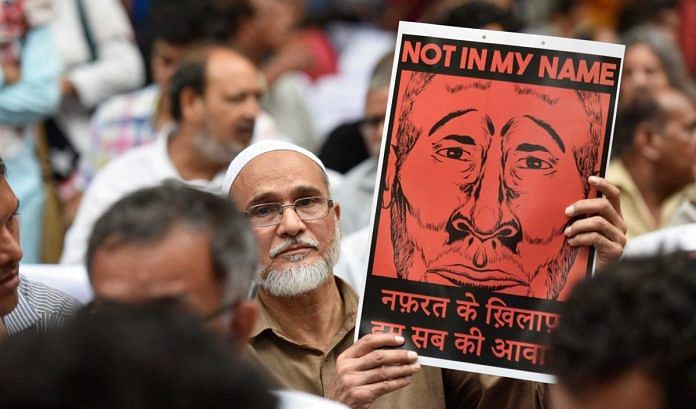With targeted hate crimes on the rise, an atmosphere of fear has become ubiquitous among India’s minorities.
Hate lynching is growing into a national scourge. More and more people today feel free, emboldened, even encouraged to violently act out their prejudices and hate as they find enabling climate for hate speech and violence fostered and legitimized by our political leadership and a wider majoritarian social climate. Lynching is fast becoming a commonplace occurence in these times of orchestrated hate and rage that we live in in India. The targets of furious and public bloodletting, as we have seen, are most often Muslims, but Dalits are also in danger. From time to time, hate violence also spills over to people of colour, especially African nationals, and ethnic minorities, particularly people from India’s north-east. (Christians, as we have also seen, are subdued not by lynching but by attacking Christian shrines, nuns and priests.)
The seemingly dispersed lynch attacks may be sparked variously by disputes over something as trivial as a seat in an unreserved train compartment, or allegations of cow smuggling or slaughter, or carrying, cooking or eating cow meat, or rumours of cattle theft or child kidnapping, or charges of sex work and drug trafficking. But make no mistake: these are targeted hate attacks. Whatever the ostensible trigger, murderous mobs gather to lynch people of hated identities often to death. These assaults are also characterized by crowds of bystanders who either actively support the killing, or do nothing to stop the strikes or to save the innocent victims.
The political response to these attacks also tends to follow a set pattern. The prime minister and BJP chief ministers mostly do not condemn the attacks, even less express sympathy with the victims. The prime minister does occasionally condemn the mob attacks, but well after they occur, in general terms, refusing to describe these as hate crimes, never expressing sympathy with the victims of these attacks, and not ensuring even in BJP-ruled states (where the majority of lynch attacks have occurred) that the men accused of these hate crimes are caught and punished. If he actually did not want these attacks to recur, or indeed for hate speech against minorities to end, he has the power and the reach to ensure that these end. His condemnation is more convincing when the victims are Dalits, never when they are Muslim.
Senior ministers and elected representatives come out in open defence of the attackers, charging the victims with crimes that provoke the attacks. The innuendo is that the victim, or at least the community to which he belongs, is somehow guilty and the violence therefore understandable, even if regrettable. The police tend in most such instances to be absent or partisan. They come in too late to save lives, and very often register crimes against the victims and drag their feet to charge and arrest the attackers. On occasion, they are present even as the slaughter of innocents unfolds but still don’t act, pleading later that they were outnumbered.
Many commentators suggest that lynching is not new, and hate attacks targeting minorities and Dalits have a long history in India. Are we then deliberately taking lynching out of context, ignoring mass communal violence and caste atrocities that have recurred in newly independent India since the bloody Partition riots of 1947? Some suggest that this is being done to discredit the government led by Narendra Modi.
There is no doubt that mass communal and caste violence have long targeted religious minorities and Dalits. But we need to understand what makes the present phase of lynching distinct. Communal violence in particular, however severe and lethal, is still bound by geography and time. A tempest of targeted hate hits a specified minority in a particular location, destroys lives, homes and livelihoods, but then, in time, it passes. The numbers of persons injured and killed by lynching may be much smaller than in many major communal violence episodes. (It is too early to confirm this conclusively, though, because a large number of lynch attacks are not acknowledged or recorded, and these continue right through the time I am writing this book.) But the social, political and psychological impact of lynching, when it becomes commonplace, is to make every person of the targeted community feel vulnerable at all times. Muslims in every corner of India that I visit tell me that in their hearts a fear is now firmly lodged, an unspoken dread that they can be attacked anywhere—in their homes, at work, in a train, on a bus, or in any public place. This is the success of the political project of lynching, to reduce targeted people into a psychology of everyday-lived terror. Not all Dalits, but those engaged in caste occupations of skinning animals are learning to live with the same fear. In tribal areas, Christian tribal people have been reduced to similar dread, not by lynching, but recurring and widespread attacks on Christian places of worship, on nuns and priests.
This excerpt w as taken with permission from the book ‘Partitions of the Heart: The Unmaking the Idea of India’ by Harsh Mander. It was published by Penguin Random House.
as taken with permission from the book ‘Partitions of the Heart: The Unmaking the Idea of India’ by Harsh Mander. It was published by Penguin Random House.




Agree people should not take law into their hand, what ever their pious ( ? ) Intention is. They should be quickly and effectively punished , to set an example . It should be advertised widely.
All said and done , why people want to kill Cow and eat , at least in the north and west India. The larger Hidu community worship it. They should not kill and eat cow.
Agreed again that with BJP coming to power , perticularly at center , Hindus are trying to assert . But people who are writing books over it should understand basic thing, you can not be doing any thing which majority consider a पाप, antagonise it and live in peace. Think. Some adjustments are over due. Perticularly for Muslims who stayed out of their own free will back in Hindu majority state , and Hindus accepted it . You rejected two Nation theory of Jinna’. Now how much so called religious freedom you want at the expense of Hindus sentiment. Rejection of two Nation theory should have made you accept we as one people. Having common culture , civilisation and History. But nothing of that sort happened. You still believe only your religion is supreme. And majority should adjust with it. Pause & Think. Lot of thinking is essential. Lot can be achieved. Leave Invaders. Consider yourself part of larger Indian people. Things will automatically fall in place. This will lead to real cohesiveness.
Yes Hindus have also to change a lot. Fortunately a Hindu is more amenable and accommodative . You can compare that with Pakistan’s majority behaviour with it’s minority. We all have the same DNA. Then why so much difference in behaviour. Indian Muslim has to really think where it’s mullas and orthodoxy is taking it. A major course correction is a essential and desirable requirement if this Nation has to exist. Otherwise I see another bifurcation demand again by Muslims only.